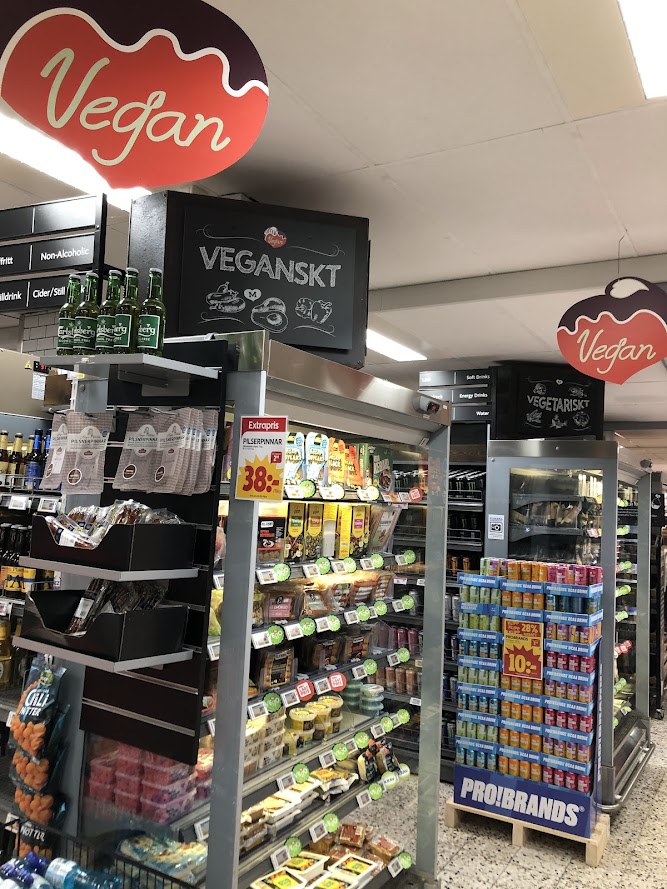Sweden is one of the countries known for good animal welfare and environmental protection. We could perceive those from the food environments. For instance, you can choose vegan or vegetarian options at almost all restaurants and cafes. At grocery stores, you often find a vegan section.

In addition to the care for animals and environments, people are well aware of the potential harm of excess intake of red meat. In 2023, the new Nordic Nutrition Recommendation: “more vegetables and fish, and less meat” was echoed as a major update (1). While this recommendation is created by the international agency called Nordic Co-operation, Sweden has its own Food Agency that sets dietary guidelines (2). One of the well-known initiatives to promote healthy eating is “green keyhole” labels on food products (3). You could find them on the packages of whole grain products, fish, oat milk, fresh juice, and others that are deemed healthy.

products at a grocery store.
However, eating healthy in Sweden is as difficult feat as it is anywhere else. People are exposed to all sorts of nudges to choose unhealthy food options.

Another unique food environment in Sweden is sugar. Sweden is proud of the invention of a candy buffet called “lösgodis”.

Here, people scoop up any of their favorite candies, put them in a bucket, and pay at the cashier by weight. Shops of lösgodis are filled with people from young to old, especially on weekends.
Collaborating with big food corporations is notoriously difficult. We all love unhealthy food after all. Who would be happy by the news of the banning or taxation of fast or unhealthy food products? It is a big public health challenge to reduce the consumption of such food and ensure healthy eating. However, I have an impression that people in Sweden could change their eating habits if that is for animals or environments rather than their own health. There may be people who are not interested in healthy eating but are interested in animal-friendly eating and environment-friendly eating. It would be interesting to observe what kind of initiatives would be taken by the Swedish Food Agency and how they may alter the eating behavior of the population.
References
1. World Health Organization. Mental disorders [Internet]. 2022 [cited 2023 Aug 5]. Available from: https://www.who.int/news-room/fact-sheets/detail/mental-disorders
2. Folkhälsomyndigheten. Nationella folkhälsoenkäten – Hälsa på lika villkor [Internet]. 2023 [cited 2023 Jul 19]. Available from: https://www.folkhalsomyndigheten.se/folkhalsorapportering-statistik/om-vara-datainsamlingar/nationella-folkhalsoenkaten/
3. Riecher-Rössler A. Sex and gender differences in mental disorders. Lancet Psychiatry. 2017 Jan 1;4(1):8–9.
